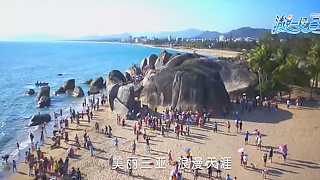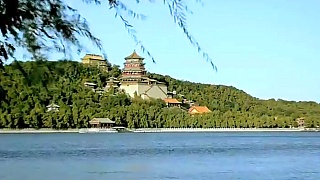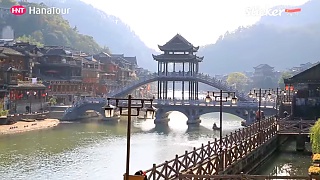 DanXia Waterfalls in ChiShui, GuiZhou province
DanXia Waterfalls in ChiShui, GuiZhou province
A natural heritage 5 star scenic area ...
[640],shadow=true,start=,stop=
GuiZhou map

Related Videos
Featured Videos

|
The most southerly part of China, HaiNan is warm all year with a more or less tropical climate.
|

|
Filmed in November 2011.
|

|
With Cheese Diary ...
With Footprint ...
|

|
With Lena Petrova ...
With Thinkers Forum ...
With Ben Norton ...
With Brian Berletic ...
With Hakim ...
With The Gravel Institute ...
With Cyrus Janssen ...
With Democracy Now ...
YT comment : "I always thought that the Chinese people were brainwashed, and then I found out that it was me!"
Some thoughts on why China is such a safe country :
At root, crime is down to poverty and an over-the-top individualism. Western style democracy is really divide and rule - the moneyed elite love it, how the people are so easily fooled and controlled.
Projection - what the West accuses China of are actually its own faults. Western democracy is top down and all about big money. In China, democracy is bottom up and meritocratic. The reason for the West's antagonism is not about politics, but success; the US wants to control the whole world (hegemony); and Western style democracy, if they can establish it in other countries, makes that easy.
Friendly people are happy people.
|

|
With Jerry's Take on China ...
|

|
With Daniel Dumbrill - don't miss it ...
Ultimately, ignorance is a choice - the decision to ignore truth / reality.
Plus, some pertinent reflections from Living in China ...
Bonus film from The New Atlas ...
|

|
With The New Atlas.
Brian Berletic and Angelo Giuliano cut through the propaganda and shine light on realities ...
Bonus films ...
On Thailand ...
On Nicaragua ...
On Palestine ...
On Syria ...
On Cuba ...
On Yemen ...
On Taiwan ...
On Western propaganda puppets ...
|

|
1 minute in Phoenix ancient water town ...
|
Tag search ?

 DanXia Waterfalls in ChiShui, GuiZhou province
DanXia Waterfalls in ChiShui, GuiZhou province





